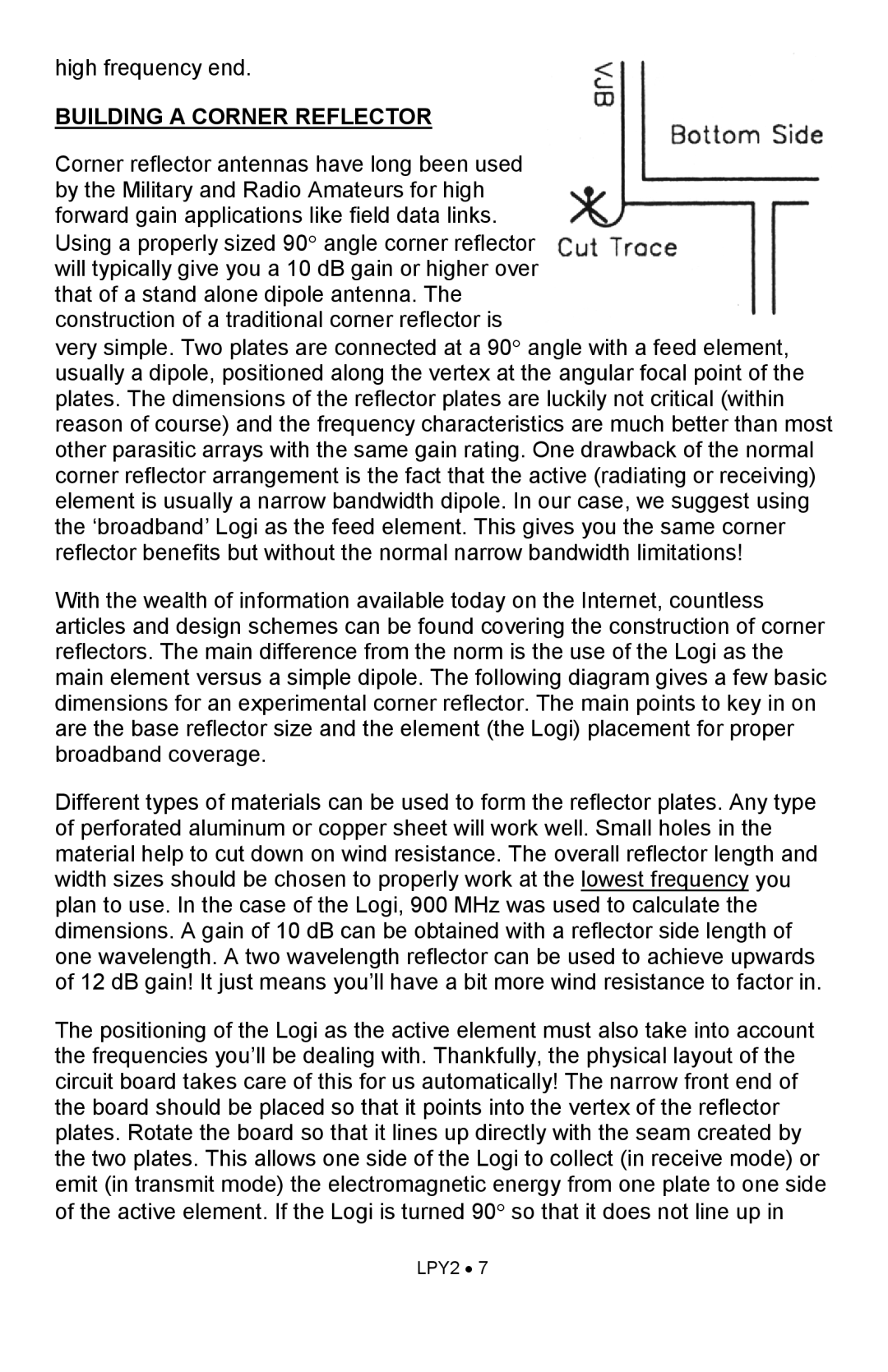
high frequency end.
BUILDING A CORNER REFLECTOR
Corner reflector antennas have long been used by the Military and Radio Amateurs for high forward gain applications like field data links. Using a properly sized 90° angle corner reflector will typically give you a 10 dB gain or higher over that of a stand alone dipole antenna. The construction of a traditional corner reflector is
very simple. Two plates are connected at a 90° angle with a feed element, usually a dipole, positioned along the vertex at the angular focal point of the plates. The dimensions of the reflector plates are luckily not critical (within reason of course) and the frequency characteristics are much better than most other parasitic arrays with the same gain rating. One drawback of the normal corner reflector arrangement is the fact that the active (radiating or receiving) element is usually a narrow bandwidth dipole. In our case, we suggest using the ‘broadband’ Logi as the feed element. This gives you the same corner reflector benefits but without the normal narrow bandwidth limitations!
With the wealth of information available today on the Internet, countless articles and design schemes can be found covering the construction of corner reflectors. The main difference from the norm is the use of the Logi as the main element versus a simple dipole. The following diagram gives a few basic dimensions for an experimental corner reflector. The main points to key in on are the base reflector size and the element (the Logi) placement for proper broadband coverage.
Different types of materials can be used to form the reflector plates. Any type of perforated aluminum or copper sheet will work well. Small holes in the material help to cut down on wind resistance. The overall reflector length and width sizes should be chosen to properly work at the lowest frequency you plan to use. In the case of the Logi, 900 MHz was used to calculate the dimensions. A gain of 10 dB can be obtained with a reflector side length of one wavelength. A two wavelength reflector can be used to achieve upwards of 12 dB gain! It just means you’ll have a bit more wind resistance to factor in.
The positioning of the Logi as the active element must also take into account the frequencies you’ll be dealing with. Thankfully, the physical layout of the circuit board takes care of this for us automatically! The narrow front end of the board should be placed so that it points into the vertex of the reflector plates. Rotate the board so that it lines up directly with the seam created by the two plates. This allows one side of the Logi to collect (in receive mode) or emit (in transmit mode) the electromagnetic energy from one plate to one side of the active element. If the Logi is turned 90° so that it does not line up in
LPY2 • 7
